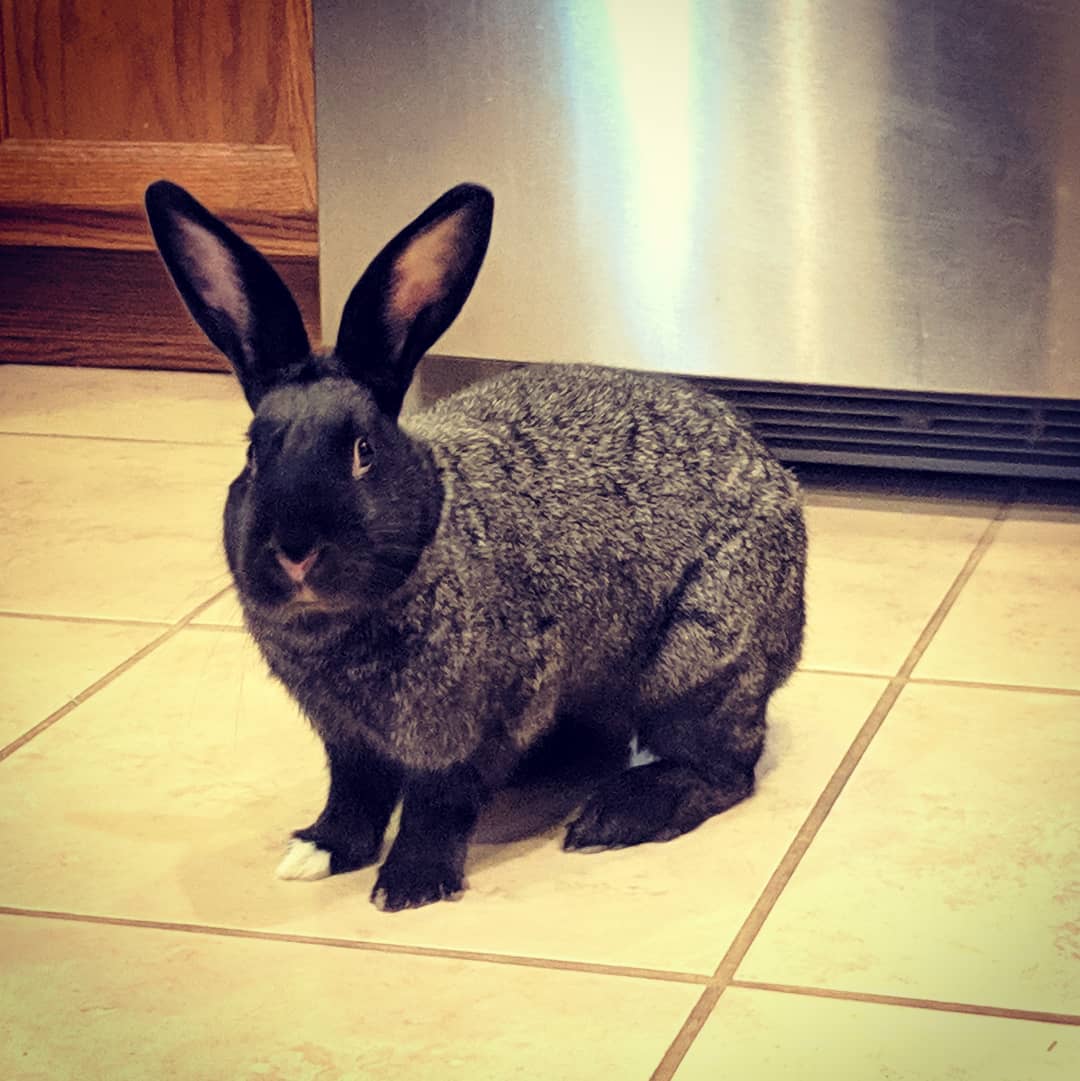Why a House Rabbit?
Perhaps you’ve just adopted your first rabbit, or maybe you already have a rabbit and would like more information to help you understand her better. House Rabbit Society, a national nonprofit organization, recommends that you keep your rabbit in the house rather than outdoors. Rabbits are intelligent, social animals who need affection, and they can become wonderful companion animals when given a chance to interact daily with their human families. Learning their body language opens up a whole new appreciation of the rabbit personality.
The Benefits of Spay and Neuter
Although most rabbits will use a litter box, hormones may cause unneutered males and unspayed females to “mark territory.” Spaying or neutering your rabbit improves litter box habits, lessens chewing behavior, decreases territorial aggression, and gives your rabbit a happier, longer life. Female rabbits should be 6 months old before being spayed, but males can be neutered as early as four months. For rabbits more than 2 years old, get a veterinary checkup first. It is important that you go to a rabbit-savvy veterinarian. If you need help finding a vet, please contact us.
Housetraining
Rabbits may have free run of the home. However, it’s best for most–and necessary for some–to start in an enclosure of some kind. Place a cat-sized litter box (box must be big enough for your rabbit to lie down in) in the corner of the enclosure your rabbit chooses for a “bathroom.” As soon as he uses the litter box consistently, you can give him some freedom. Place one or more large litter boxes in corners of the running area outside the cage. Use only positive reinforcement (treats and praise), never punishment during housetraining.
Bunny-proofing
Living with a house rabbit requires bunny-proofing your home. It is natural for rabbits to chew on furniture, rugs, drapes, and–most deadly of all–electrical cords. Cords must be concealed so the rabbit cannot reach them. Exposed cords can be encased in vinyl tubing (found at hardware stores). By splitting the tubing lengthwise with a utility knife, the cord can be pushed inside it.
Give your rabbit enough attention, safe chewables, and toys, so that she is distracted from chewing furniture and rugs. A cardboard box stuffed with hay makes an inexpensive playbox. Young rabbits (under a year old) are more inclined to mischief and may require extra supervision and/or more bunny-proofed areas than mature rabbits.
House rabbits and other animals
House rabbits and indoor cats can get along fine, as can rabbits and well-mannered dogs. Please keep in mind that many breeds of dog were bred specifically to kill rabbits. Although your dog is friendly to you and your cat you have no way of knowing what will happen when he meets a rabbit for the first time. You cannot change instinct. Also keep in mind that rabbits are prey animals so they are naturally fearful and may not understand your dog’s friendly intentions. Supervision is needed to control a dog’s playful impulses (this is especially true for puppies) as well since rabbits’ skeletons are incredibly fragile.
Major Health Problems
Intestinal blockages: Because rabbits groom themselves constantly, they get fur balls just as cats do. Unlike cats, however, rabbits cannot vomit, and excessive swallowed hair may cause a fatal blockage. Rabbits can also develop a serious condition known as GI stasis which has many of the same symptoms. If your rabbit shows a decrease in appetite and in the size of droppings, get advice from a rabbit veterinarian. Prevention: keep bunny brushed (less hair is swallowed); provide exercise time/space–at least 30 hours a week; give lots of fresh hay daily; provide 3+ varieties of fresh greens daily.
Bacterial balance: A rabbit’s digestive tract is inhabited by healthful bacteria. If the “good” bacteria balance is upset by stale food or a sudden change in diet, harmful bacteria can take over the digestive track and kill the rabbit.
Prevention: Keep all rabbit food in a cool dry place and make dietary changes very slowly, giving any new food in small amounts. If no abdominal gurgling or loose stool results in 24 hours, the food may be offered again. If your rabbit goes outdoors to exercise, check for pesticides and toxic plants. (A list is available from your local poison center.)
Infectious bacteria: Many rabbit diseases are caused by bacteria, not viruses, and can be successfully treated with antibiotics. If your rabbit shows symptoms of a “cold” or “snuffles,” take him to a veterinarian familiar with antibiotics that can be safely used in rabbits. Oral drugs of the penicillin family, such as amoxicillin, should NOT be given to a rabbit, since there is risk of destroying good intestinal bacteria.
It’s up to you
Find an experienced rabbit veterinarian before a problem develops. If your rabbit has been harassed or injured by a predator, take him to a veterinarian even if no injuries are apparent. On hot days, keep your rabbit cool indoors with wet towels, cool tiles or frozen water bottles wrapped in a towel. Regularly check your rabbit’s eyes, nose, ears, teeth, weight, appetite, and droppings for signs of possible illness.
If your rabbit goes outdoors, you should also check the bunny all over for fleas, ticks, mites, or cuterebra. (Read about cuterebra here.)
Danger Signs
Don’t waste valuable time! Call your veterinarian immediately if you see:
- Diarrhea with listlessness
- Sudden loss of appetite with bloat and abdominal gurgling
- Loss of appetite with labored breathing
- Loss of appetite with runny nose
- Head tilt
- Incontinence (urine-soaked rear legs)
- Abscesses, lumps or swellings anywhere
- Any sudden behavioral change






